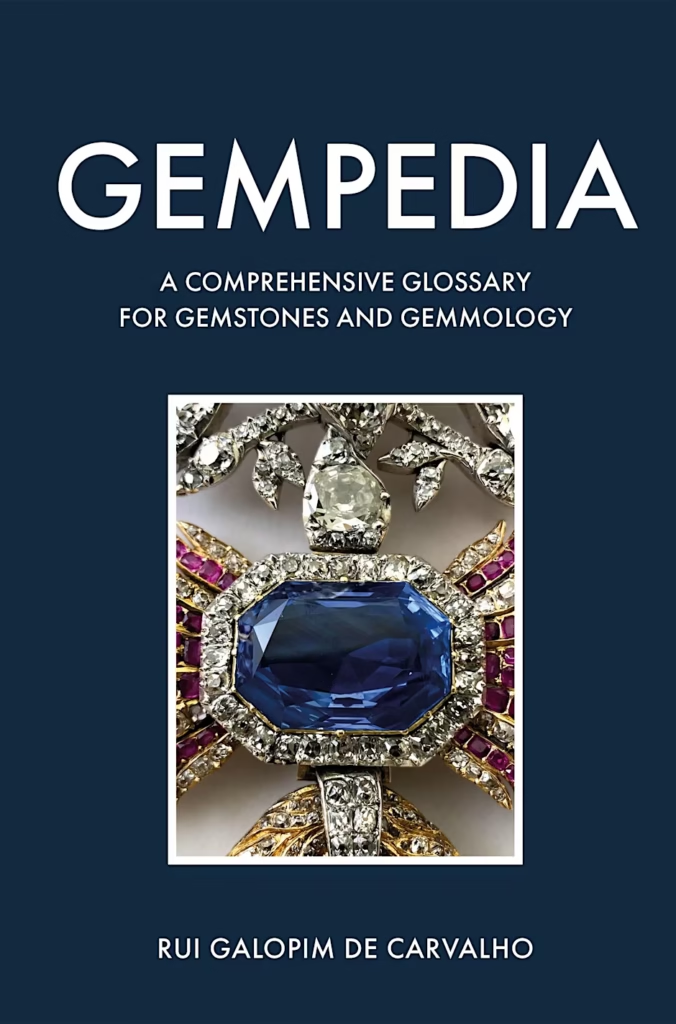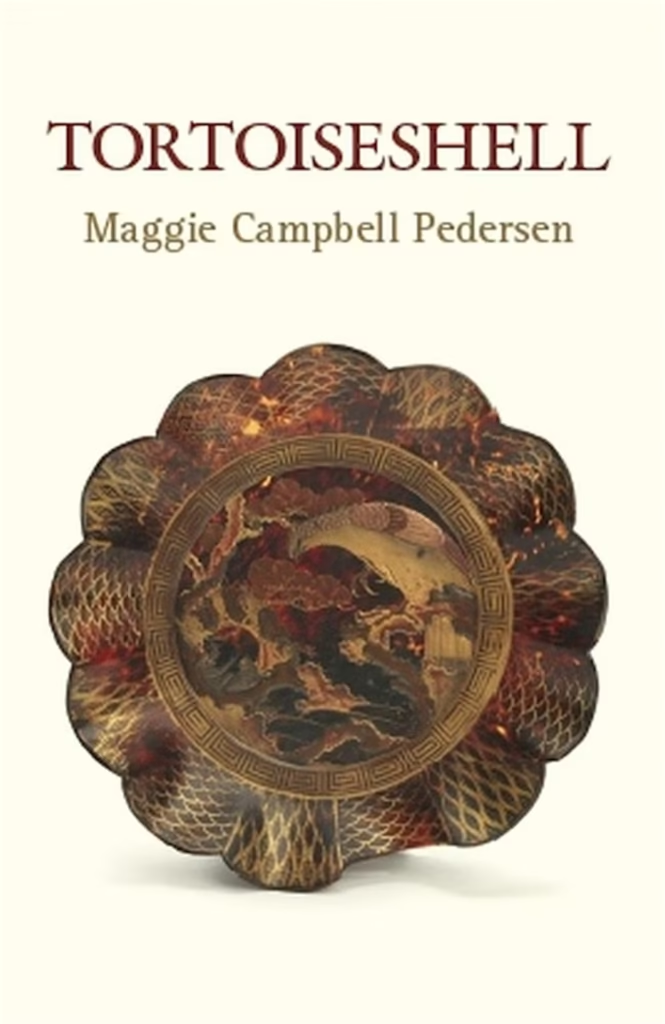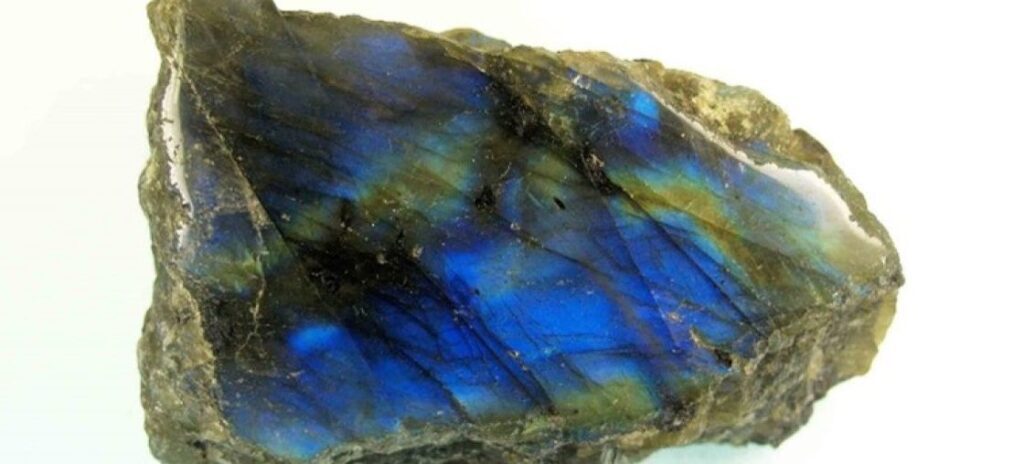
A genealogical tree for the feldspar family of gemstones
Whether you’re shopping for moonstones, obsessed with labradorite, or on the hunt for the perfect sunstone, this is the guide for you. Gem-A Tutor Pat Daly offers a rundown of the feldspar family of gemstones, including beginner’s insights into some of the most popular gems you’ll find on the market.
For those who are not already familiar with it, it is hard to come to grips with the feldspar group of minerals and gemstones. More than 30 names are used to distinguish stones by their chemistry, crystal group and habit, twinning and gem variety. Gemmologists may simplify matters by disregarding many terms they do not need, but 20 or so remain.
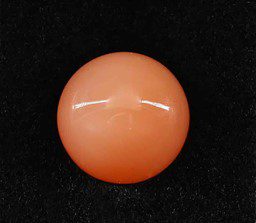
Peach moonstone cabochon provided by Marcus McCallum and photographed by Henry Mesa.
The group is important to geologists who study igneous and metamorphic rocks because recognising feldspars through the loupe and microscope allows useful conclusions to be drawn about a rock’s formation, chemistry and cooling history. For jewellers and gemmologists, the gem varieties are more important. These are distinguished by their colour and transparency or by their optical effects.
Feldspar Formation
Feldspars are silicates composed of the oxides of silicon and aluminium, together with those of potassium (K), sodium (Na) or calcium (Ca). Other chemical elements, most importantly iron and copper, may be incorporated in small amounts. Differences in the proportions of these oxides are the main causes for the range of feldspars and their varieties, but crystal structures may also be important.
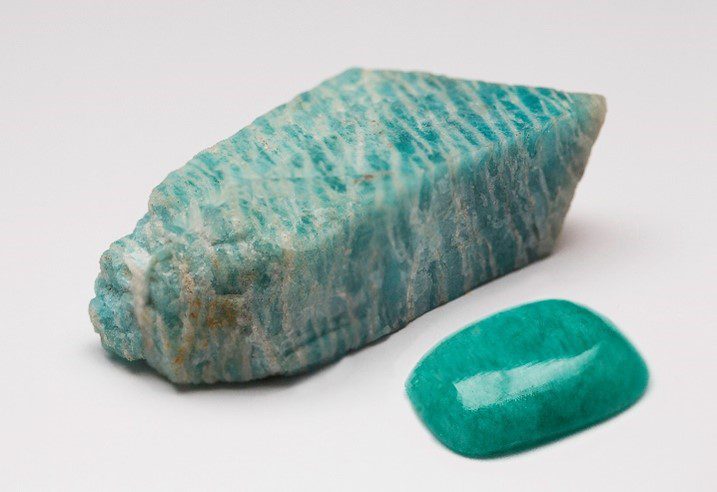
Amazonite rough and cabochon from the Gem-A Archives.
There is an almost complete isomorphous series between K and Na feldspars at high temperatures and between Na and Ca feldspars at low temperatures. Slow cooling of feldspars of appropriate composition, which grew at high temperatures, results in the expulsion of some impurities, which form oriented layers or crystals in the host stone. The results of this process of exsolution include bright iridescence and other reflection effects.
K-feldspars, which may contain little Na or Ca, are divided into three mineral species according to their crystal structures, which depend on their temperatures of formation and cooling histories.
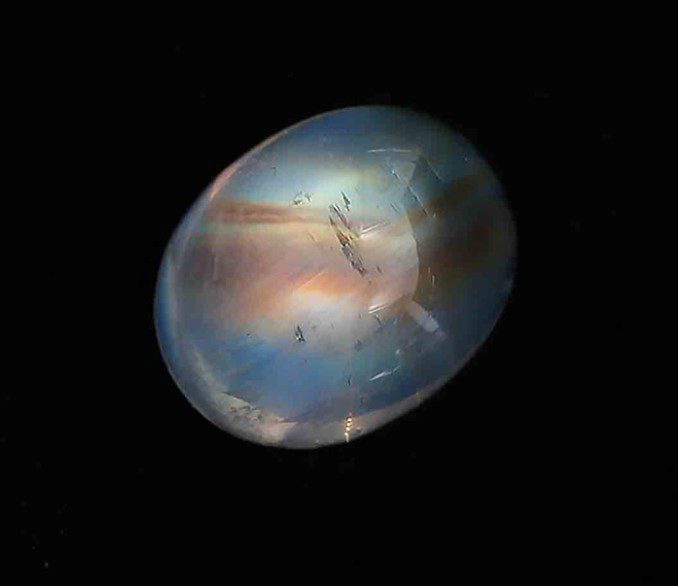
Moonstone cabochon provided by Marcus McCallum and photographed by Henry Mesa.
A high-temperature, rapidly cooled mineral called sanidine, which may be found in volcanic rocks, has monoclinic symmetry. Transparent gem quality material is not well-known but white to brown stones from Germany and yellow stones from Madagascar are fairly easy to find in the gem trade.
Orthoclase which crystallizes with a different kind of monoclinic symmetry has cooled more slowly and is a typical feldspar of granites. White to brown transparent stones are known to collectors, and an attractive translucent green variety is found at Broken Hill in Australia.
Microcline, which forms at the lowest temperatures, or is most slowly cooled, belongs to the triclinic crystal system. Translucent to opaque green stones are called amazonite. This inexpensive, pretty material is widely used for decorative purposes and in jewellery.
Moonstones
Exsolution in stones with compositions intermediate between K and Na feldspars produces a beautiful optical effect called adularescence. Stones which display it are called moonstones. Their body colours range from near white to yellow, green, pink, grey and brown, and they may be transparent to opaque. Adularescence is seen as a strongly directional, silvery to white or bluish reflection from within the stone.
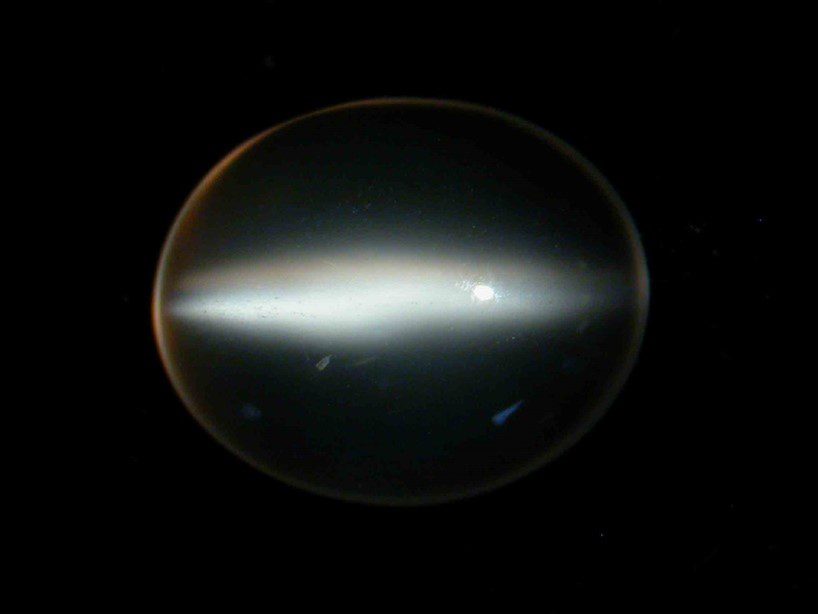
Cat’s eye moonstone photographed by Pat Daly from the Gem-A Archives.
The best stones combine light body colour and high transparency with a favourably oriented bright bluish adularescence. Reflection effects in moonstones sometimes produce stars and cat’s eyes.
Andesine and Labradorite
The isomorphous series between Na and Ca, which is called the plagioclase series, comprises six named feldspars and several gem varieties. It is divided into albite and oligoclase at the Na end, andesine and labradorite near the middle of the series, and bytownite and anorthite at the Ca end. Transparent, usually white to yellow examples of all these feldspars have been fashioned for collectors. These divisions are important to geologists, but gem varieties are named for their optical properties, and their limits may not conform to those recognized in mineralogy.
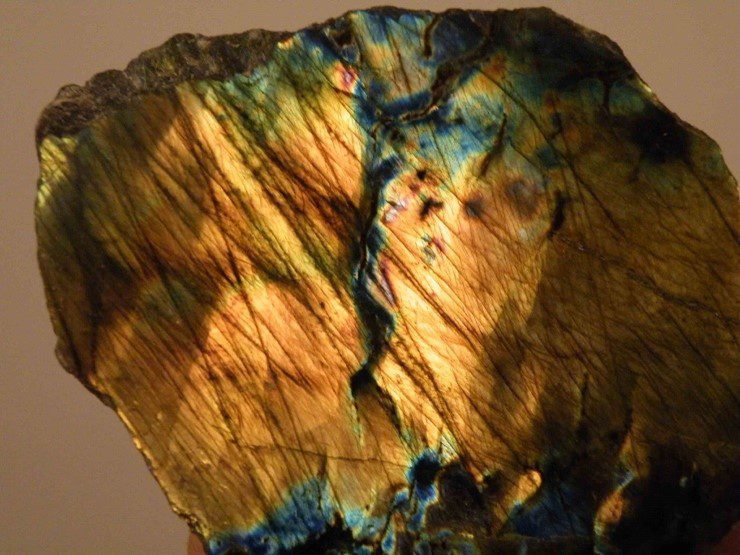
Labradorite photographed by Pat Daly from the Gem-A Archives.
Iridescence is seen in Na-rich feldspars called peristerites, and it is also the most striking feature of most gem-quality labradorite. Most labradorite is translucent, with a greyish body colour, against which blue, green, yellow to orange and reddish iridescence is seen. Rainbow moonstone is white iridescent labradorite which may be transparent.
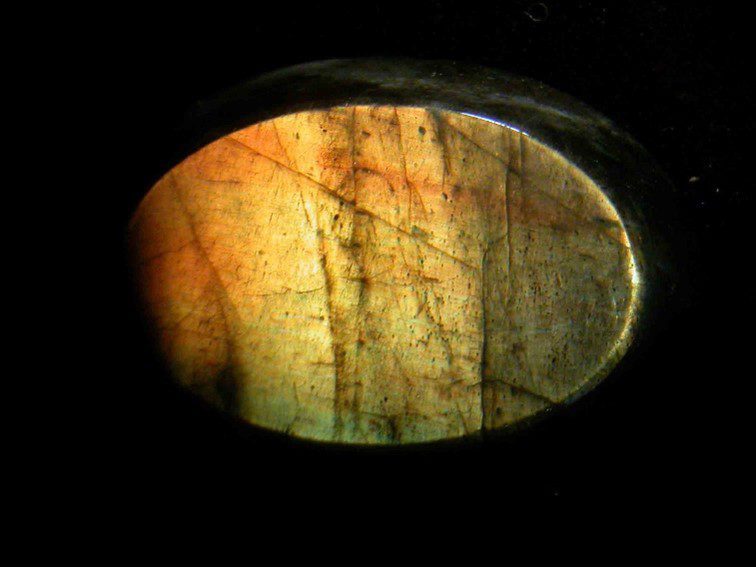
Labradorite photographed by Pat Daly from the Gem-A Archives.
Sunstone
Sunstone is the name given to aventurescent feldspars, most of which are oligoclase or andesine. Aventurescence is a sparkling effect caused by reflections from crystal inclusions. In feldspars, they are most often translucent orange, oriented platy crystals of hematite. This iron oxide mineral gives the stones their orange-to-brown colour and their optical effect. Sunstone cat’s eyes and stars are sometimes seen.
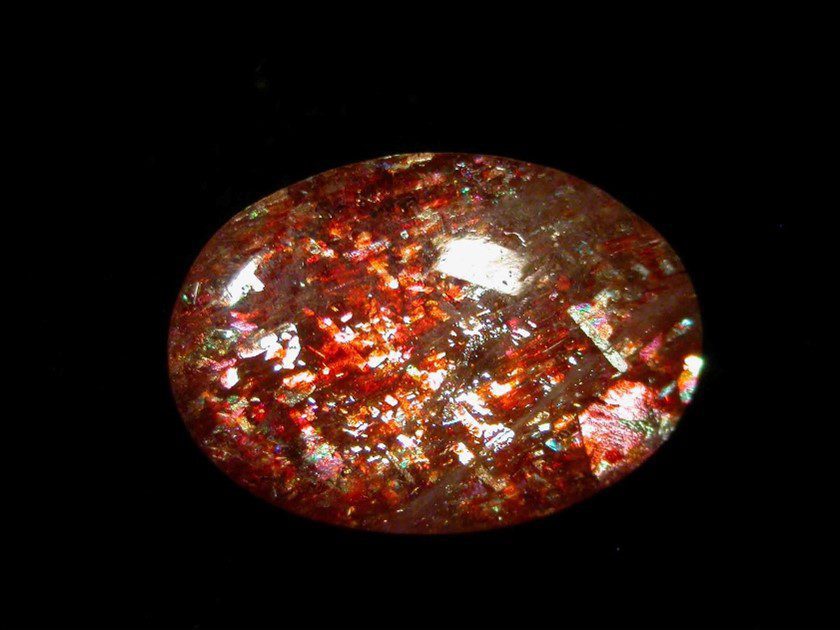
Sunstone photographed by Pat Daly from the Gem-A Archives.
Stones from Oregon, in the USA, contain oriented copper crystals, which impart their colour and aventurescence. Some transparent orange to red and green stones from this region are not aventurescent but have still been included in the term sunstone. The name has also been given to similar stones from other parts of the world, though it is thought that the colours of some are produced by treatment.

Oregon sunstone from the Gem-A Archives.
Aventurescence is seen in a rare variety of orthoclase from Australia. Iridescent orange, elongated hematite crystals, oriented in two directions, intersect to produce a lattice pattern, and the name rainbow lattice sunstone has been given to the stones.
Anorthoclase
A rare, high-temperature feldspar called anorthoclase is sometimes cut for collectors. It is a Na feldspar containing some K and Ca, which is not easily identified without chemical analysis. Mount Erebus in Antarctica is one of its more exotic locations, from which a few stones are known.
Properties of Feldspars
Feldspars have a hardness of 6, which is rather soft for gemstones, so care must be taken with faceted stones. They possess good to perfect cleavage in two directions and are brittle. They should be protected from accidental blows, and cleaning them with ultrasonic or steam cleaners is not advisable.
Transparent feldspars are valued in the usual way for such materials, for their colours and freedom from inclusions. Those displaying optical effects are judged by their colour and transparency, the colours and brightness of the effect, and the proportion of the display surface of the stone which it covers. Since they are strongly oriented, the viewing angles at which the effects are seen on the stone are also important.
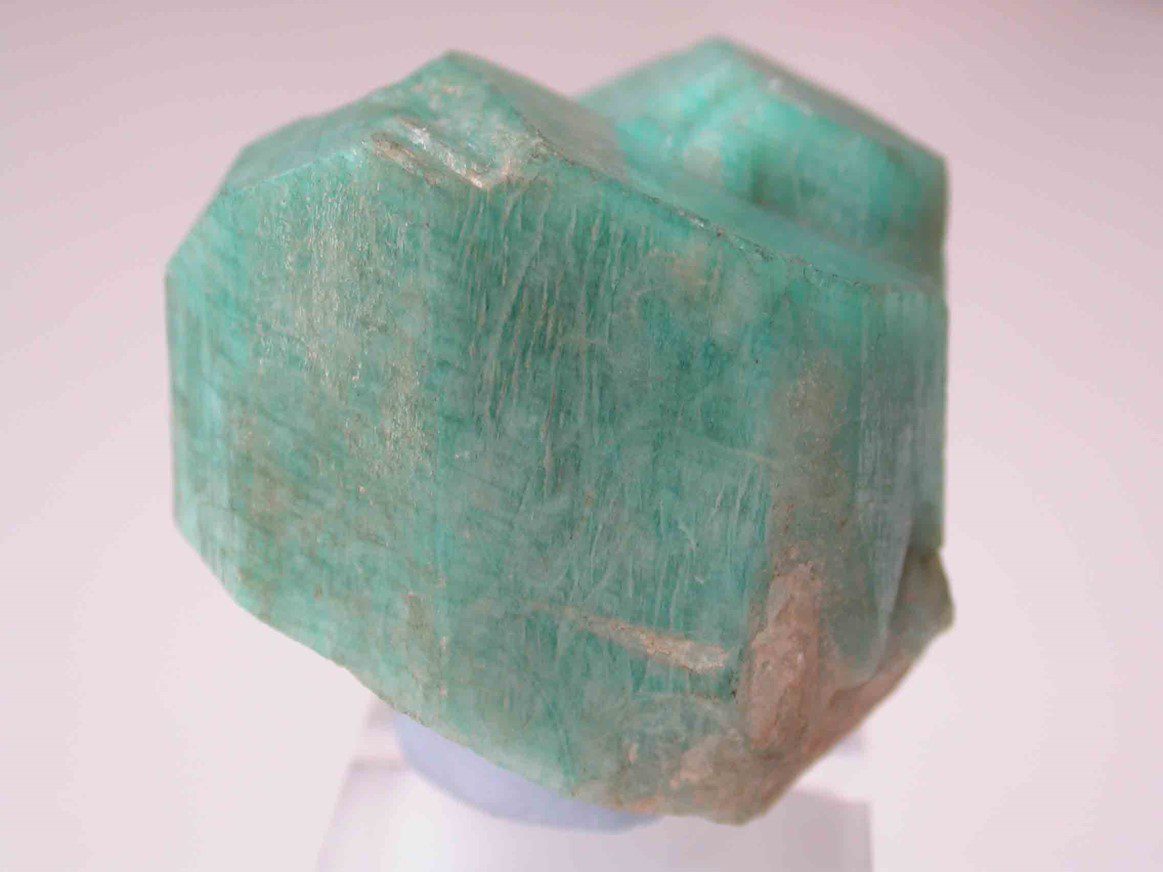
Rough amazonite crystal photographed by Pat Daly from the Gem-A Archives.
Conclusion
Feldspars are, collectively, the commonest minerals of Earth’s crust, but they may be heavily included, and they are susceptible to alteration by hot fluids which circulate in rocks in which they have grown. This means that nearly all feldspars are cloudy, suitable for internal and external decoration in buildings, but rarely of gem quality. Nevertheless, the feldspar group supplies collectors with many interesting varieties and jewellers with some striking materials displaying beautiful optical effects.
Main image: Labradorite from the Gem-A Archive.
